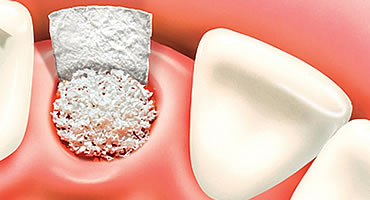Bone Graft
Bone grafting is a surgical procedure that replaces missing bone with material from patient′s own body, an artificial, synthetic, or natural substitute. Bone grafts are used as a filler and scaffold to facilitate bone formation and promote wound healing.

Bone grafting is a surgical procedure that replaces missing bone with material from patient′s own body, an artificial, synthetic, or natural substitute. Bone grafts are used as a filler and scaffold to facilitate bone formation and promote wound healing.
Ridge defects develop as a result of surgery, trauma, infection, or congenital malformations. The goals of osseous replacement are maintenance of contour, elimination of dead space, and reduce postoperative infection; and thus enhance bony and soft tissue healing. The insufficient quantity of bone is due to tooth loss which results in rapid resorption of alveolar bone due to lack of intraosseous stimulation by periodontal ligament (PDL) fibers, for example, pneumatization of maxillary sinus following tooth loss.
Bone grafts are bioresorbable and have no antigen-antibody reaction, act as a mineral reservoir which induces new bone formation.
Bone grafting is possible because bone tissue has the ability to regenerate completely if provided the space into which it has to grow. As natural bone grows, it generally replaces the graft material completely, resulting in a fully integrated region of new bone.
